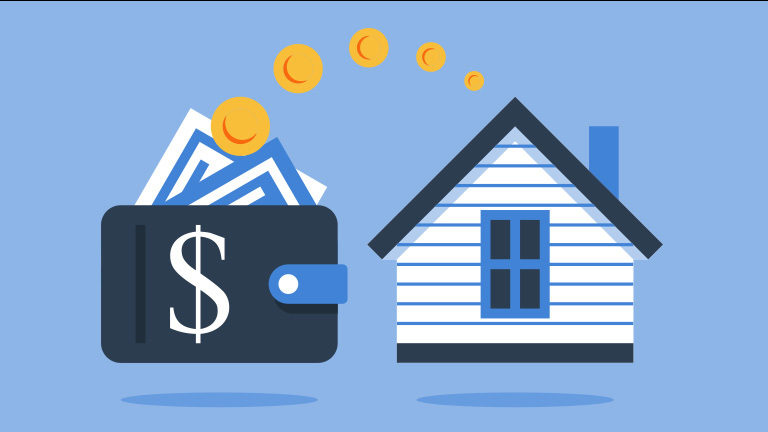There are many advantages to buying a home: the rewarding sense of ownership, not answering to a landlord, and having more control over what you want to do with your living space. However, one drawback to becoming a homeowner is the home repair and maintenance you must take on.
While some home repairs are unpredictable, you can prepare yourself by creating a budget and scheduling regular maintenance. In this blog, we’ll explore home repair budgeting strategies and outline common costs that will help you manage maintenance, repairs and upgrades throughout your home.
Quick Links
- What should I expect to maintain?
- How frequently will I need to repair and replace things in my home?
- How should I build my home repair budget?
- How can I keep costs low?

What should I expect to maintain?
You should plan to maintain all aspects of your home including its physical structure, key systems and major appliances. However, home maintenance needs will vary greatly depending on a variety of factors unique to your property.
Maintenance and repair needs are affected by:
- The age of your home
- The size of your home
- The current condition of your home
- What kinds of repairs and adjustments were made by previous owners
- Your area’s weather and climate
- The age and condition of your home’s appliances
How frequently will I need to repair and replace things in my home?
Unless you’re doing an overhaul on your entire home, it’s unlikely you’ll have to replace and repair everything all at once. Instead, keep track of the age of condition of your home’s major systems and features. By maintaining, repairing or replacing things gradually, before they fail, you can spread out the cost and avoid stressful emegencies.
Check out these average lifespans for reference:
- Roofs: 12-75 years depending on material
- Siding: 20-40 years
- Water Heater: 8-25 years depending on traditional tank or tankless
- HVAC: 10-15 years
- Deck: 10-30 years
- Septic System: 20-40 years
- Carpets: ~10 years
- Tile, Wood and Laminate: 25-30 years
- Refrigerator: 10-20 years
- Washer and Dryer: ~10 years
- Dishwasher: 10-15 years
- Stove and Oven: 10-15 years
How should I build my home repair budget?
It’s hard to predict how much you’ll need and when exactly you’ll need it. To budget for annual home maintenance and repairs you will want to create a repair fund. Here are two common savings strategies to begin and maintain that fund.
1% Rule
If your home is less than 30 years old, many experts recommend putting aside 1% of the total purchase price of your home for maintenance repairs. For example, if you buy a $300,000 home, you should have $3,000 saved for annual repairs.
Square Footage Rule
Another savings strategy is to set aside $1 for every square foot of livable space in your home annually. If your home is 2,200 square feet, you should plan to save $2,200 each year for repairs.
If your home is 30+ years old or built with materials that don’t have as long of a lifespan (like wood siding and composition shingle roofing), or if it is located in a humid, wet or stormy climate, it may be better to skew your savings closer to 3%.
How can I keep costs low?
While some home repair expenses are unavoidable, you can save money by selectively DIY-ing your home maintenance and repairs, fixing small problems right away, taking preventative measures, and keeping track of warranties.
Be Smart About DIY
If you’re confident in your ability to pick up a new skill like painting a deck or laying your own floor tiles, be sure to review tutorials and proceed with caution before starting a project. When in doubt, ask for expert advice.
Doing home repair labor yourself can save you a lot of money but may take a long time and could cost you a lot more if you make mistakes or run afoul of standards or regulations.
Complex projects that could cause damage if done incorrectly, such as electrical wiring and plumbing, are typically better left to experts. However,
Fix Small Problems As Soon As You See Them
Minor problems can turn into bigger, more costly problems if left unattended. Fix leaky faucets, clean gutters and investigate water spots before they cause major damage later.
Take Preventative Measures
The best way to make things last is to take care of them as recommended. Things like regularly changing filters, inspecting grout, re-caulking gaps and scheduling regular HVAC and chimney checkups can save you money in the long run.
Keep Track of Warranties
You may be offered a home warranty when purchasing your home. The warranty is a safety net against expensive, unforeseen repairs. It is different from insurance. Often the seller will offer to purchase the warranty on your behalf to ensure added peace of mind that any component of the home can be fixed affordably. You can also get a home warranty on your own.
Home warranties sometimes include appliances but if they don’t you can purchase separate warranties for those.
